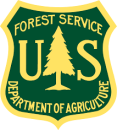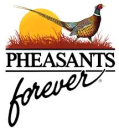Ways to Get Involved
Whether it is building, banding, surveying, or reaching out to the public - there are many opportunities to volunteer at a wildlife refuge.
Volunteering
More than 42,000 people volunteer their time and ideas each year to the U.S. Fish and Wildlife Service. Whether they work on the land, in a visitor center or with youth, they contribute to the conservation mission that reaches back more than a century. Become a volunteer or Refuge Friend to contribute your strength on behalf of America's natural resources.
Volunteers at Waubay can be involved in many different types of projects, depending on their interests. Past volunteers have assisted with waterfowl surveys, butterfly surveys, working with Youth Conservation Corp workers, banding pelicans, and invasive species invasive species
An invasive species is any plant or animal that has spread or been introduced into a new area where they are, or could, cause harm to the environment, economy, or human, animal, or plant health. Their unwelcome presence can destroy ecosystems and cost millions of dollars.
Learn more about invasive species control. Volunteers can also assist with gardening, office duties, leading bird walks, landscape maintenance, or any other pet project or interest the volunteer or group may have. If you are interested in volunteering at Waubay or any other Refuge please contact the Refuge directly.
Our Partners
From its start in 1903, the National Wildlife Refuge System has owed its very existence to concerned citizens eager to protect America's natural resources.
More than 200 nonprofit Refuge Friends organizations support national wildlife refuges, whether they work with a single refuge, a refuge complex or an entire state. Friends members are crucial to conserving and protecting our nation’s wildlife and teaching millions of Americans that their actions today determine the conservation legacy of tomorrow.
The National Wildlife Refuge System is committed to building partnerships which encourage conservation and preservation of our natural and cultural resources. Partnerships with the Refuge System bring innovative approaches to solving land management and water disputes in the most environmentally protective manner. Scientifically-informed and technologically-based stewardship of our public lands, waters, wildlife and special places must be collaborative efforts between the Refuge System, other government agencies, and private organizations if conservation efforts are to succeed.
The U.S. Fish & Wildlife Service's Partners for Fish and Wildlife (Partners) program serves as the Service’s premier tool for conservation delivery on privately owned land. The Partners program, which recently celebrated its 25th anniversary, provides technical and financial assistance to private landowners, tribes, and schools on a voluntary basis to help meet the habitat needs of federal trust species. Field biologists work one-on-one with landowners and partners to plan, implement, and monitor activities. Working together with more than 45,000 landowners and 3,000 conservation partners, the Program has successfully restored over 1,000,000 acres of wetland habitat; 3,000,000 acres of upland habitat and 11,000 miles of streams. Projects that can be done through the Partners program include wetland or grassland restoration, and fencing and installation of water pipelines and tanks for grazing management. Contact the Refuge if you would like more information about the Partners program and how we can work together for the benefit of landowners and wildlife.
Another partnership program Waubay Complex Refuge is involved with is the Prairie Coteau Habitat Partnership (PCHP). Numerous state, federal, and private organizations are helping to conserve native pasture and grassland habitat in South Dakota and Minnesota. One of the ways this group does this is to teach landowners how to use prescribed fire to restore and rejuvenate native pastures.
The conservation issues of today are complex and challenging and often extend past Refuge or state boundaries. To address these challenges a partnership program was recently developed through the leadership of the U.S. Fish & Wildlife Service called Landscape Conservation Cooperatives (LCC). LCCs are applied conservation science partnerships with two main functions. The first is to provide the science and technical expertise needed to support conservation planning at landscape scales – beyond the reach or resources of any one organization. The second function of LCCs is to promote collaboration among their members in defining shared conservation goals. LCCs don’t place limits on partners; rather, they help partners to see how their activities can "fit" with those of other partners to achieve a bigger and more lasting impact. This networked approach to conservation will ensure the sustainability of America’s land, water, wildlife, and cultural resources that are important to quality of life and local economies.
The Plains and Prairie Potholes Prairie Potholes
These freshwater marshes are found in the upper Midwestern prairies, especially the Dakotas and Minnesota. Depressions that were created by retreating glaciers about 10,000 years ago;, they fill with water during spring, providing important habitat for waterfowl and many other species. Indeed, the Prairie Pothole Region is often called America’s “duck factory” since around half of the continent’s ducks spend at least part of the year there. The prairie potholes are an important water source, and they help recharge underground aquifers.
Learn more about Prairie Potholes Landscape Conservation Cooperative (LCC) is dedicated to the conservation of a landscape unparalleled in importance to a vast array of unique species whose populations are in steep decline. The Plains and Prairie Potholes LCC includes three main sub-units, the Prairie Pothole Region, Northern Great Plains, and the riparian riparian
Definition of riparian habitat or riparian areas.
Learn more about riparian corridors of several major river systems including the Missouri, the Yellowstone and the Red River of the North.
Outreach
For students and recent graduates the Pathways Program can provide another avenue for finding an internship or permanent job with the U.S Fish & Wildlife Service or other government agencies.
Though most people may think of a game warden as the typical wildlife job, there are many other positions and career paths that can be fulfilled. Some of the jobs available in the U.S. Fish & Wildlife Service include fishery biologist, botanist, environmental educator, endangered species biologist, engineer, graphic designer, budget analyst, forensic scientist, wildland firefighter, forester, photographer, information technology specialist, pilot, or writer/editor. There are all kinds of opportunities to help protect and conserve our natural resources for generations to come.
Education Programs
Working on a Refuge
Ever wonder what it would be like to work on a National Wildlife Refuge? There are a number of opportunities for children and young adults to get a taste of a career working at Waubay or any one of the 560 Refuges around the country. For short term projects, Boy scout groups have completed eagle scout activities such as clearing trails or building part of our boardwalk. Girl Scouts have organized work days to stain picnic tables and help put in our blue goose mosaic.
For full time work in the summer, youths can apply for our Youth Conservation Corps if you are between the ages of 16 and 18. Enrollees work eight weeks from June to August for 32 hours per week. Projects may include fence building, invasive species invasive species
An invasive species is any plant or animal that has spread or been introduced into a new area where they are, or could, cause harm to the environment, economy, or human, animal, or plant health. Their unwelcome presence can destroy ecosystems and cost millions of dollars.
Learn more about invasive species control, and general maintenance. They also may get to visit other wildlife refuges, fish hatcheries, or see how birds are banded. No experience is necessary, just a willingness to work, learn, and have fun. For more information contact the Wildlife Refuge Manger.
Older youths can apply for an internship through the Student Conservation Association. There are opportunities in all 50 states with positions that may last from three to twelve months. These positions provide a stipend and travel to and from home. They aren't paid positions but they are an excellent way to gain experience and meet prospective employers as well as see different parts of the country.
Many Refuges hire youths age 16 and older for summer jobs that range from biological technicians to firefighters to tractor operators. Most jobs are advertised on usajobs.gov.
Youth in the Great Outdoors is an initiative of the U.S. Departments of Interior and Agriculture and provides a place to learn about places to go, things to learn about our natural resources, and employment opportunities.







